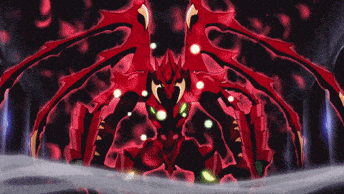- VerseTaku
- Posts
- De La Soul's 3 Feet High and Rising and High School DxD: Rising to New Heights
De La Soul's 3 Feet High and Rising and High School DxD: Rising to New Heights
On one hand, we have De La Soul's 3 Feet High and Rising, a hip-hop album that broke down barriers with its playful lyricism and eclectic samples, painting a vivid picture of youth culture in 1989. An enduring masterpiece, it encapsulates themes of identity, societal expectations, and the celebration of individualism. Parallel to the auditory journey is High School DxD, an anime and manga series known for its high-energy narratives surrounding the perils and pitfalls of adolescence. It weaves tales of romance, supernatural battles, and the exploration of one's true self amidst the chaos of high school life.

Common Themes: Identity and Rising Above
Identity in Lyricism and Animation
De La Soul took the hip-hop scene by storm with their introspective approach to the identity crisis:
"Mirror, mirror on the wall. Tell me, mirror, what is wrong?"
Similarly, High School DxD's protagonist, Issei Hyodo's quest for identity resonates with the same introspection, albeit in a world rife with demons and angels.
Society's Shackles and Freedom
Both works tackle society’s expectations — one through music and the other through a fictional high school setting, each challenging their audience to consider how they conform or rebel.
Artistic Storytelling and Expression
Musically, 3 Feet High and Rising is a tapestry of samples and rhythms that brought a cartoonish, yet profound aspect to daily struggles. In the same vein, High School DxD's vibrant art and outlandish story arcs turn mundane high school experiences into epic adventures.
Characters from both works face trials that contribute to their depth, such as the evolution of De La Soul's personas throughout the album and the growth of Issei from a typical high school boy to a hero of the supernatural world.
Emotional Impact and Audience Reception
The emotional journey of De La Soul's album is one of reflection and joy, inviting listeners on a path through playful experimentation:
"Me, myself, and I, it's just me, myself and I."
Meanwhile, High School DxD combines intense battle scenes with comedic moments, sparking debates about the nature of self-improvement and the essence of being a hero.
Quoted Reflections
De La Soul's poignant observations:
"It's a magic number."
This lyric mirrors the magical elements and the power of three in High School DxD's narrative structure – the three factions: angels, demons, and fallen angels.
From High School DxD:
"I want to be the kind of person who can proudly show his back to his juniors!"
Statement about growth and responsibility, which harmonizes with De La Soul's coming-of-age topics within their album.
Concluding Reflections
Drawing connections between these two disparate works allows fans from both camps to witness how thematic resonance can transcend medium. By paralleling De La Soul's insightful album with High School DxD's spirited narrative, we find a shared heartbeat within the art of storytelling. Each offers a mirror into self-discovery, encouraging us to rise above our challenges, question the status quo, and grow in the face of adversity.
Both tap into the universal quest for identity and a place in the world — a journey that's as relevant in hip-hop as it is in high-school hallways filled with angels and demons. This exploration reminds us that art, no matter the form, seeks to uplift, reflect, and empower.
And isn't that what rising to new heights is all about?